Foundation Year
The English curriculum is built around the three interrelated strands of language, literature and literacy. Teaching and learning programs should balance and integrate all three strands. Together, the three strands focus on developing students' knowledge, understanding and skills in listening, reading, viewing, speaking, writing and creating. Learning in English builds on concepts, skills and processes developed in earlier years, and teachers will develop and strengthen these as needed.
In the Foundation year, students communicate with peers, teachers, known adults and students from other classes.
Students engage with a variety of texts for enjoyment. They listen to, read and view spoken, written and multimodal texts in which the primary purpose is to entertain, as well as some texts designed to inform. These include traditional oral texts, picture books, various types of stories, rhyming verse, poetry, non-fiction, film, multimodal texts and dramatic performances. They participate in shared reading, viewing and storytelling using a range of literary texts, and recognise the entertaining nature of literature.
The range of literary texts for Foundation to Year 10 comprises Australian literature, including the oral narrative traditions of Aboriginal and Torres Strait Islander Peoples, as well as the contemporary literature of these two cultural groups, and classic and contemporary world literature, including texts from and about Asia. Literary texts that support and extend Foundation students as beginner readers include decodable and predictable texts that range from caption books to books with one or more sentences per page. These texts involve straightforward sequences of events and everyday happenings with recognisable, realistic or imaginary characters. Informative texts present a small amount of new content about familiar topics of interest; a small range of language features, including simple and compound sentences; mostly familiar vocabulary, known, high-frequency words and single-syllable words that can be decoded phonically, and illustrations that strongly support the printed text.
Students create a range of imaginative, informative and persuasive texts including pictorial representations, short statements, performances, recounts and poetry.
(source: www.australiancurriculum.edu.au)
Achievement Standard
Receptive modes (listening, reading and viewing)
By the end of the Foundation year, students use predicting and questioning strategies to make meaning from texts. They recall one or two events from texts with familiar topics. They understand that there are different types of texts and that these can have similar characteristics. They identify connections between texts and their personal experience.
They read short, decodable and predictable texts with familiar vocabulary and supportive images, drawing on their developing knowledge of concepts of print, sounds and letters and decoding and self-monitoring strategies. They recognise the letters of the English alphabet, in upper and lower case and know and use the most common sounds represented by most letters. They read high-frequency words and blend sounds orally to read consonant-vowel-consonant words. They use appropriate interaction skills to listen and respond to others in a familiar environment. They listen for rhyme, letter patterns and sounds in words.
Productive modes (speaking, writing and creating)
Students understand that their texts can reflect their own experiences. They identify and describe likes and dislikes about familiar texts, objects, characters and events.
In informal group and whole class settings, students communicate clearly. They retell events and experiences with peers and known adults. They identify and use rhyme, and orally blend and segment sounds in words. When writing, students use familiar words and phrases and images to convey ideas. Their writing shows evidence of letter and sound knowledge, beginning writing behaviours and experimentation with capital letters and full stops. They correctly form known upper- and lower-case letters.
(source: www.australiancurriculum.edu.au)
- Free Plan
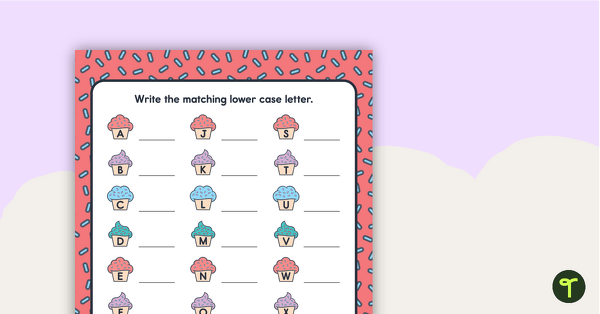
Uppercase and Lowercase Matching
A set of four pages for practicing uppercase and lowercase letter recognition.
- Plus Plan
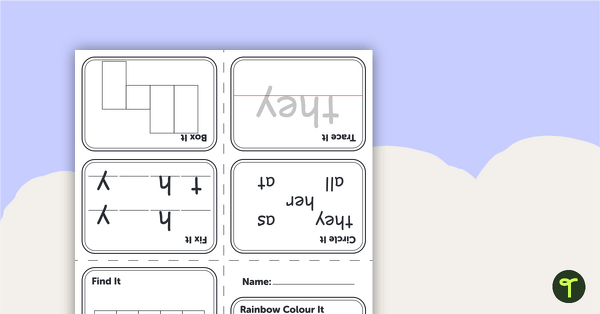
‘They’ Sight Word Little Book
A little book with activities for the word ‘they’.
- Plus Plan
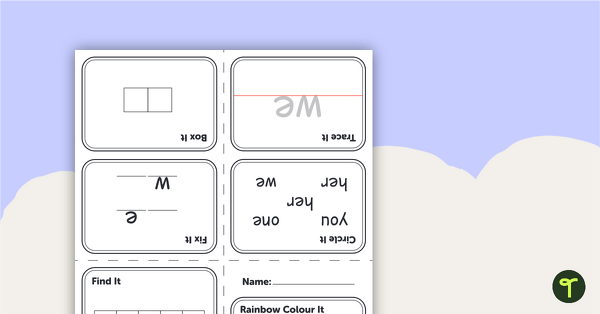
‘We’ Sight Word Little Book
A little book with activities for the word ‘we’.
- Plus Plan
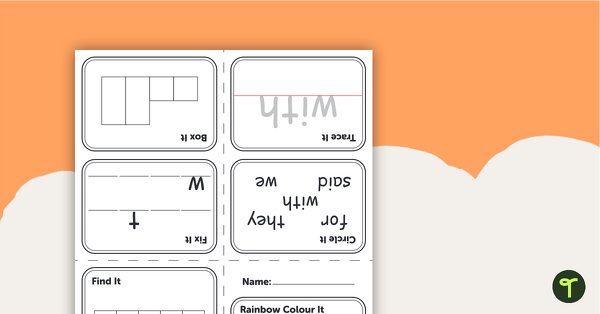
‘With’ Sight Word Little Book
A little book with activities for the word ‘with’.
- Plus Plan
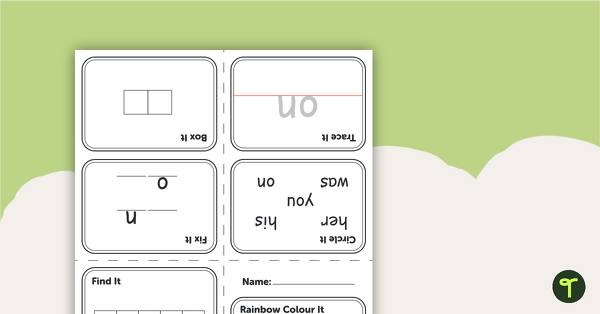
‘On’ Sight Word Little Books
A little book with activities for the word ‘on’.
- Plus Plan
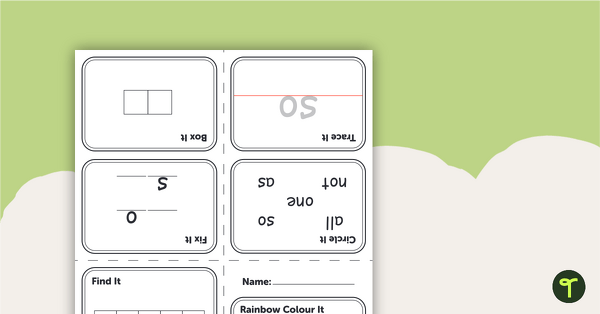
‘So’ Sight Word Little Book
A little book with activities for the word ‘so’.
- Plus Plan
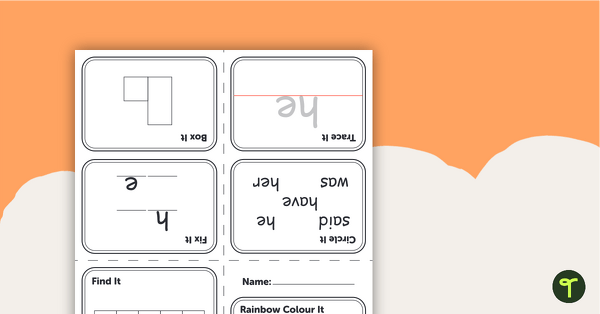
‘He’ Sight Word Little Book
A little book with activities for the word ‘he’.
- Plus Plan
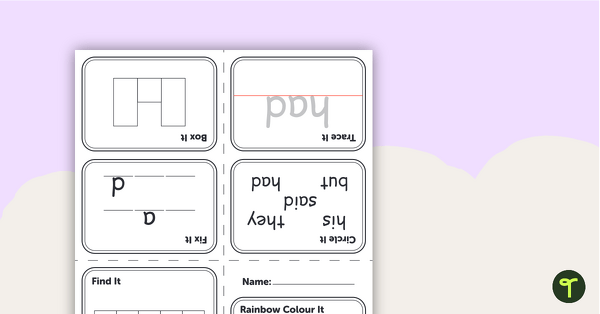
‘Had’ Sight Word Little Book
A little book with activities for the word ‘had’.
- Plus Plan
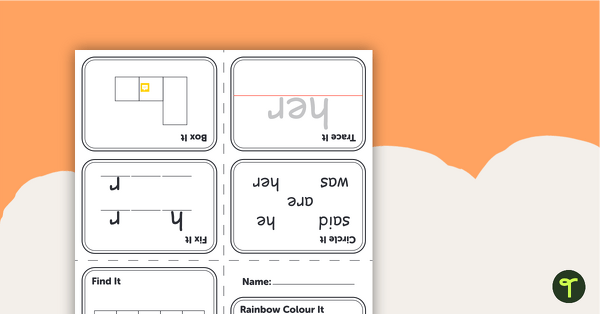
‘Her’ Sight Word Little Book
A little book with activities for the word ‘her’.
- Plus Plan
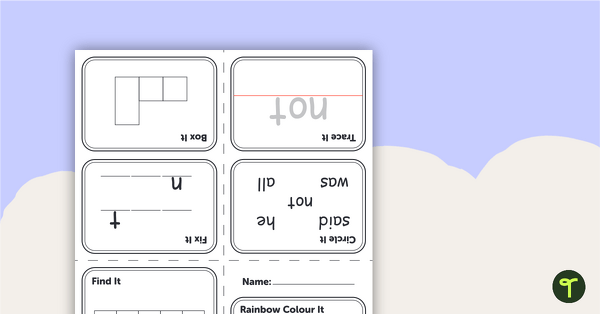
‘Not’ Sight Word Little Book
A little book with activities for the word ‘not’.
- Plus Plan
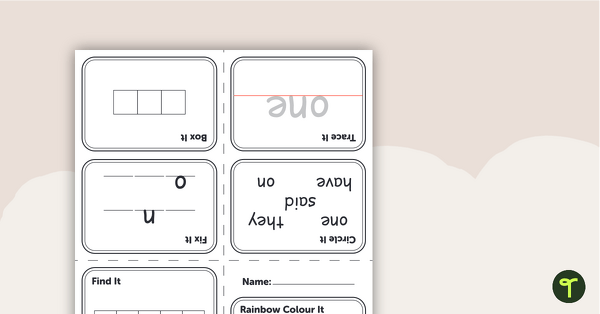
‘One’ Sight Word Little Book
A little book with activities for the word ‘one’.
- Plus Plan
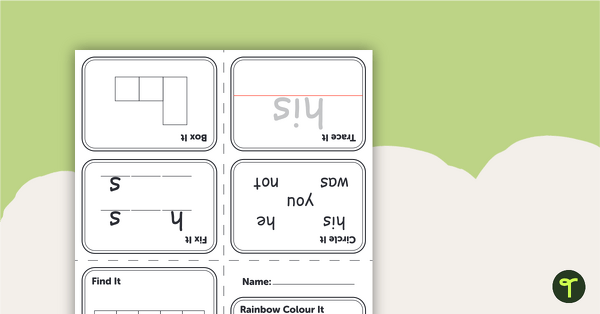
‘His’ Sight Word Little Book
A little book with activities for the word 'his'.
- Plus Plan
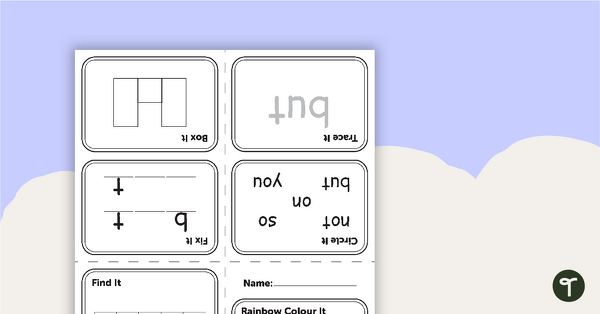
‘But’ Sight Word Little Book
A little book with activities for the word 'but'.
- Plus Plan
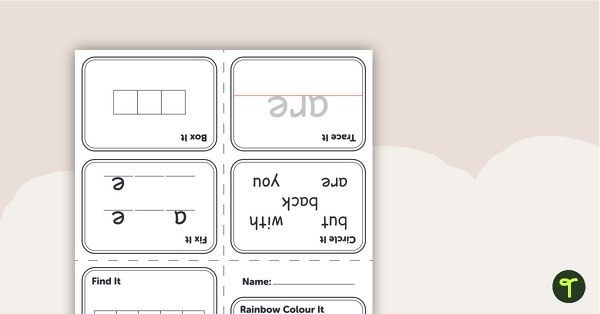
‘Are’ Sight Word Little Book
A little book with activities for the word ‘are’.
- Plus Plan

‘All’ Sight Word Little Book
A little book with activities for the word 'all'.
- Plus Plan
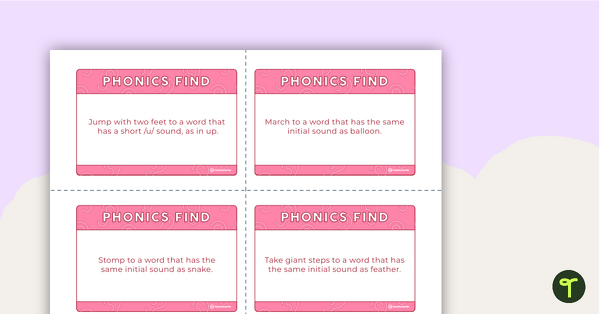
Phonics Find Description Cards
A set of 32 task cards prompting students to use their phonics knowledge to find words that include specific sounds.
- Plus Plan
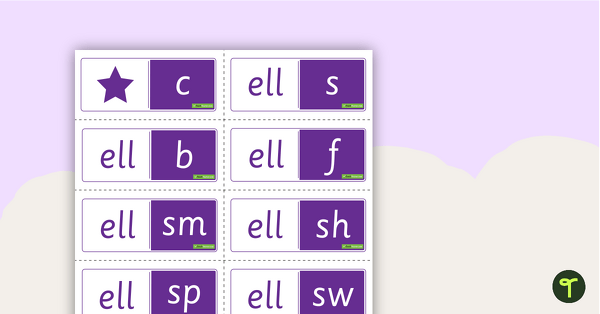
Rhyming Dominoes
Dominoes using rhyming words.
- Plus Plan
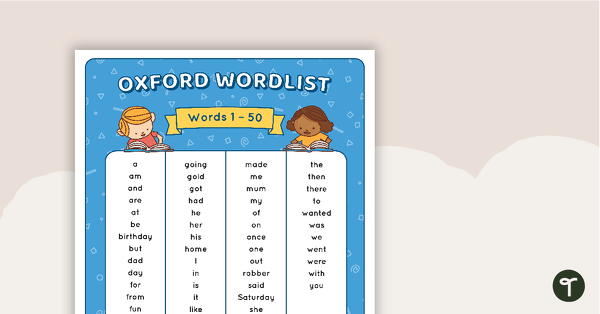
Oxford Wordlist Mats - Words 1 to 354
A set of five Oxford Wordlist Mats to assist students with their reading and spelling.
- Plus Plan
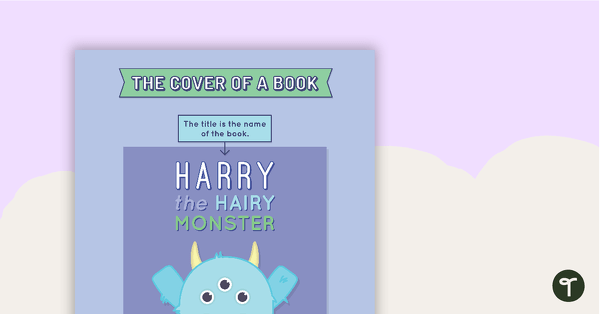
Features of a Book Cover Poster
A poster highlighting the main features of the front cover of a book.
- Plus Plan

Reading Detectives Bookmarks
8 colourful reading detective bookmarks to use during guided reading sessions in the classroom.
- Plus Plan
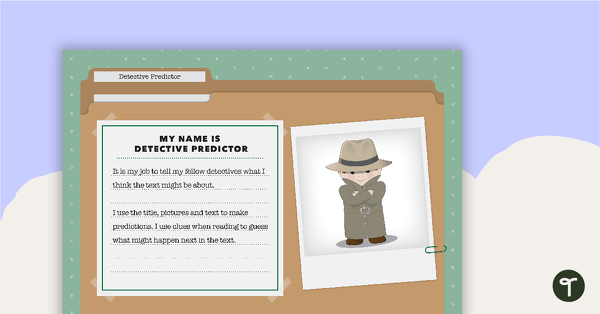
Reading Detectives Resource Pack
A 16 page resource pack including 8 detective roles to assign to students during guided reading sessions.
- Plus Plan
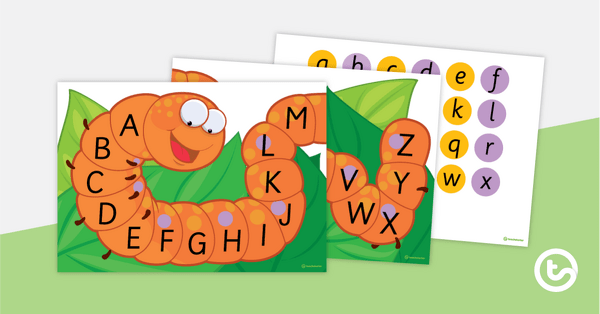
Alphabet Matching Caterpillar Activity
A vibrant and fun activity to teach lower case and upper case to young children.
- Plus Plan
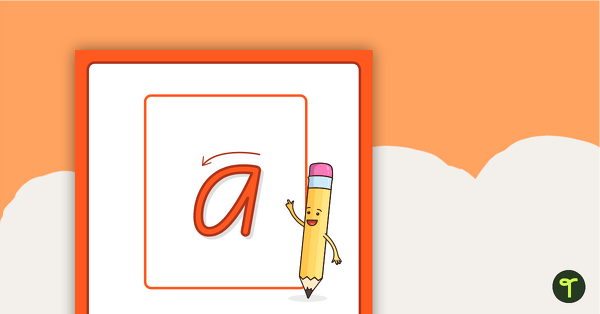
Letter Formation Alphabet Posters (With Instructions)
A set of letter formation alphabet posters, with simple instructions, to display in the classroom.
- Plus Plan
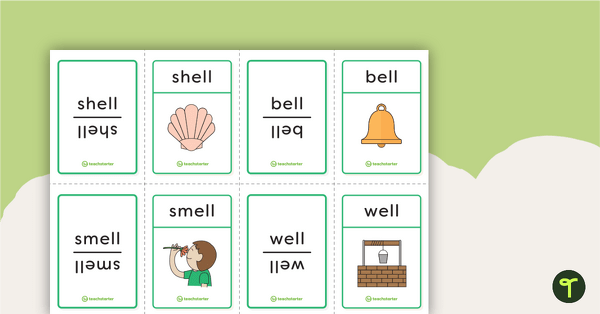
Rhyming Words Snap Cards
A set of 32 snap cards to reinforce word families and rhyming with your students.
- Plus Plan
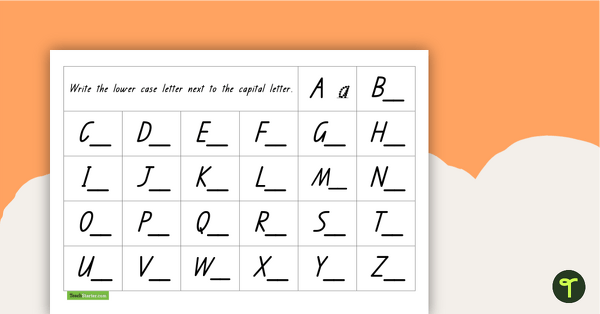
Writing Lower Case Letters
Students practice writing the lower case letter next to the provided capital letter.
- Plus Plan
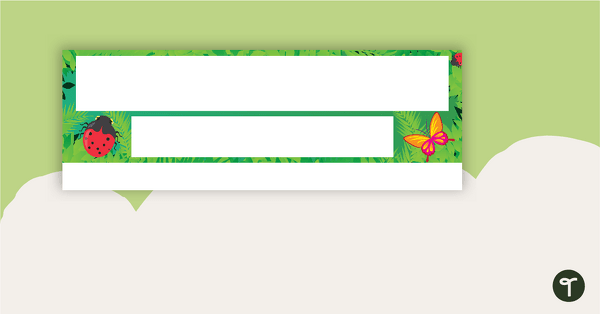
Desk Plate Alphabet and Number Line - Butterflies and Lady Bugs
Lower Grade Desk Plates with the alphabet, number line and student's name on them.
- Plus Plan
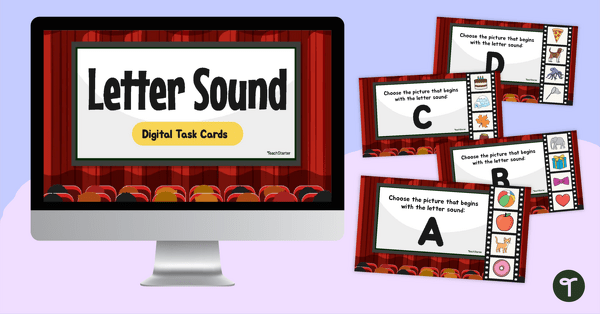
Letter Sound Digital Task Cards
Explore letter sounds with your students using this Alphabet Letter Sounds Game Bonanza digital activity.
- Plus Plan
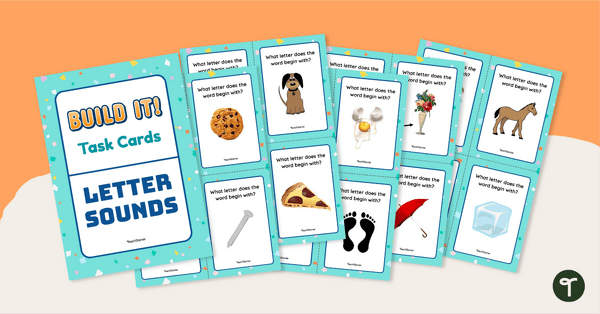
Letter Sound Knowledge Activity Cards
Practise identifying and writing the beginning sounds of words with this set of 28 task cards with your students.
- Plus Plan
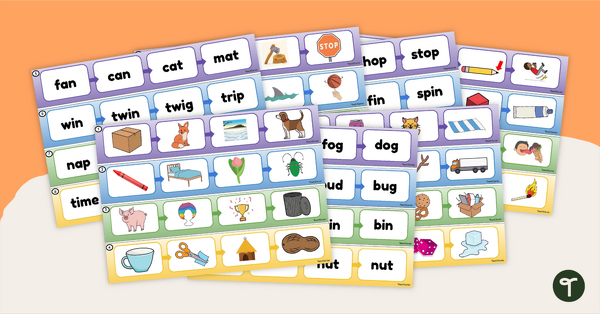
Phoneme Manipulation Picture Cards
Explore phoneme substitution with your students using this set of image task cards.
- Plus Plan

Phoneme Manipulation Task Cards - Where’s My Bone?
Use this phoneme manipulation activity to engage students in listening and manipulating sounds in simple CVC words.
- Plus Plan
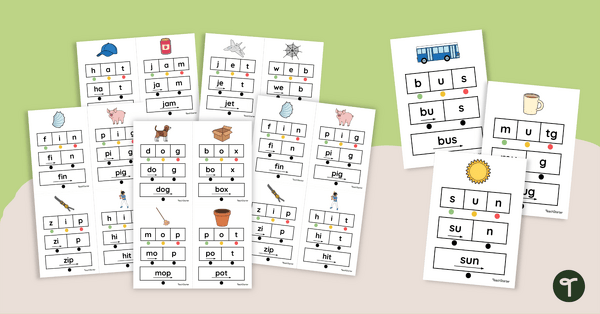
CVC Successive Phoneme Blending Task Cards
Help students blend CVC words by using the successive blending technique with this set of easy to use phoneme blending task cards.
- Plus Plan
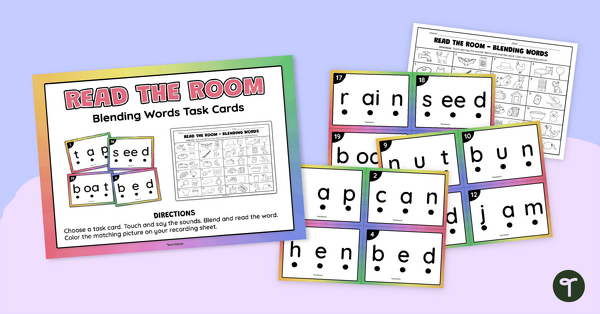
Read the Room - Blending Words Task Cards
Get your students active and also practising their phoneme blending skills with this fun read the room blending activity.